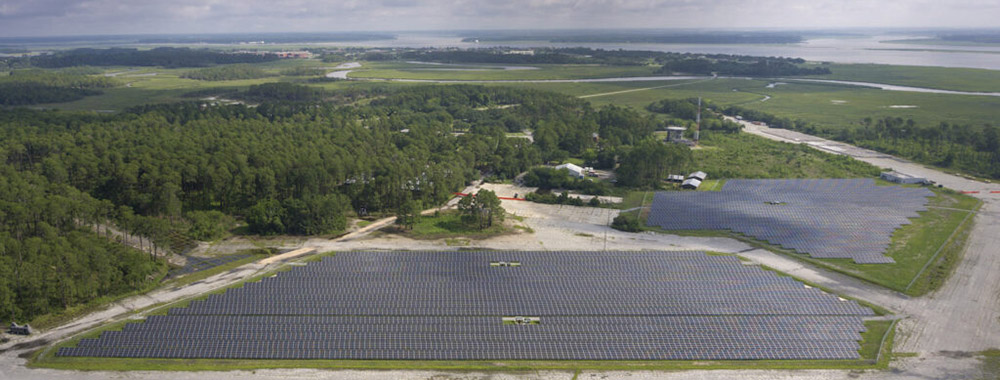
Search...
The solar industry is undergoing a dramatic shift, rapidly moving from Passivated Emitter and Rear Contact (PERC) technology to Tunnel Oxide Passivated Contact (TOPCon) technology.

The advantages of TOPCon are clear: higher efficiency, higher power generation and significantly lower levelized cost of electricity (LCOE) through reduced land, tracker and labor costs.
TOPCon technology improves the passivation path and minimizes electron recombination (or loss), thereby enhancing energy conversion. This advancement allows for ever-increasing efficiencies and the ability to install more components on land that allows limited space.
TOPCon also exhibits a bifacial power generation coefficient of 80% compared to PERC's 70%, thereby increasing the amount of power generated on the back of the module relative to the front. Finally, TOPCon has a better temperature coefficient than PERC, resulting in higher power generation in hot conditions.
Overall, TOPCon has a 1-2% advantage in power generation, depending on location, which can add millions of dollars in annual revenue to large solar farms.
Currently, TOPCon is more cost-effective than other n-type technologies. In contrast, the TOPCon ecosystem offers a wider range of equipment options and technology pathways, making converting production lines from PERC easier and more compatible, requiring only some additional equipment and layout space.
The warranty provisions of TOPCon and PERC have similar annual decay rates of approximately 0.4%. However, TOPCon has a lower first-year decay rate of 1%, compared to PERC’s 2%.
The transition to TOPCon is so fast that PERC will be a thing of the past in a few years.
According to the latest market intelligence from the Clean Energy Association (CEA), TOPCon is expected to account for half of global production capacity by the end of this year, and PERC capacity will drop below 25% and be completely phased out in 2028. While the U.S. market may lag slightly behind limited domestic supplies, TOPCon is gaining traction globally and manufacturers are ramping up production to meet surging demand.
As technology evolves rapidly, so does a learning curve. Any new production line will have a higher defect rate. Suppliers may also face delays in improving processes and failing to achieve promised efficiency and reliability goals.
PERC's widespread global adoption has led risk-averse end-device developers to avoid TOPCon for a while until more data becomes available. Likewise, some financiers may be cautiously waiting to see how TOPCon materializes. Still, they cannot delay it indefinitely, as the transition is already well underway.
The introduction of TOPCon adds a variable to the supply chain and EPC, making it more complex in the short term. Customers want to know how to navigate long-term supply agreements over the next few years.
Price remains a key factor in component sourcing strategies. As PERC components are phased out, manufacturers are slashing prices to make room for TOPCon. But PERC prices in the United States are not as low as in other regions, and the recent RFP resulted in a TOPCon price of $0.03 per watt.
Developers must carefully decide whether saving a few cents is worth sacrificing power generation, taking into account long-term profitability and the extended warranty offered by TOPCon.
While TOPCon is very close to being beneficial in almost all cases, it's not quite there yet. Developers need to evaluate whether using TOPCon or PERC is cost-effective on a project-by-project basis.
Additionally, component reliability and quality are critical, and third-party qualification testing is recommended to verify performance claims using real-time data and actual production statistics.
At CEA's work, we advise developers not to purchase products without seeing third-party qualification testing and verification. To ensure that TOPCon components meet the manufacturer's performance and reliability requirements, third-party audits, production monitoring and random testing are performed, along with accelerated testing in climate chambers that simulate decades of field use.
Customers considering multi-year supply agreements should prioritize suppliers with the capital and flexibility to increase TOPCon production as needed, as well as years of experience and R&D capabilities. In addition, suppliers with both PERC and TOPCon production lines have greater flexibility in purchasing strategies.
Additionally, developers must emphasize quality and reliability, as some manufacturers may cut corners to meet demand quickly.
The choice regarding contract duration is entirely client-specific and depends on their individual needs, risk tolerance and financiers. Some customers will only purchase from Tier 1 suppliers because they are confident of transitioning to new technology more quickly and are willing to pay a premium for this peace of mind.
However, there are others who may be willing to work with Tier 2 manufacturers to get price discounts and possibly access to the domestic content of the Inflation Reduction Act (IRA).
Only those large second-tier players that can differentiate themselves and demonstrate additional value by mitigating supply chain risks through UFLPA will be able to compete before the big players start to dominate again.
By prioritizing strong quality assurance programs, reliability and flexibility in procurement strategies, solar developers can transition from PERC to TOPCon with confidence.